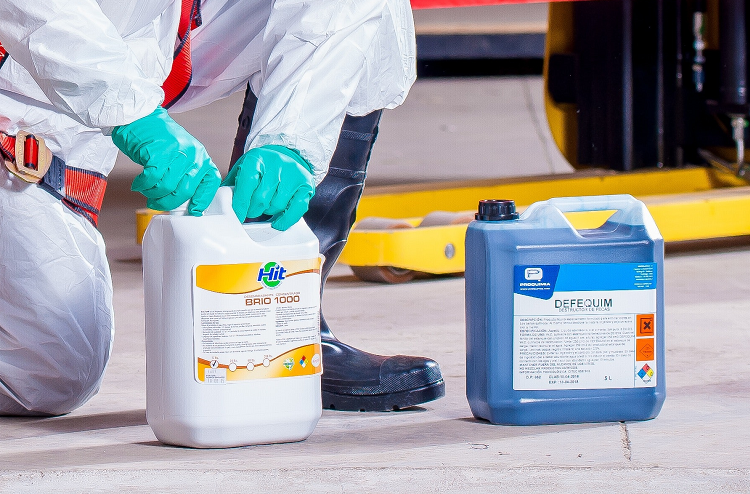Pesticides - what's on a label?
All pesticide containers are required to be properly labelled which not only details the effective application of the product but also provides key information relating to its safe use. All users must have read and understood the information contained on the label before the pesticide is used.
Pesticide labels will contain the following information:
- The name of the product and the name of the company marketing it.
- The MAPP number
- The active ingredients contained in the product along with the formulation.
- Information on pest/ disease/ weeds the product controls
- Necessary precautions during its use
- Any hazard symbols necessary for the product.
- Advice on the safe disposal of the product
- Medical advice in case of accident.

In addition as part of the authorisation process pesticides will have Statutory Conditions of Use, which should be clearly shown on the labelling. Full details of authorisations can be found here.
Exceptions to this are Extensions of Authorisation for Minor Use (EAMU), whereby off-label applications can be made. A full list of current EAMU can be found here.
What are the Statutory Conditions of Use?
These will detail how a product must be used- failure to follow the statutory conditions of use is an offence.
Statutory Conditions of Use will detail:
- Its authorised use
- The crops it can be used on
- The disease or condition it may be used for
- Maximum Rates, both as an individual dose and maximum total dose
- Application timings from windows of application to latest growth stages or in some cases latest dates of application.
- Following crop restrictions
- Harvest interval
Buffer Zones and LERAPs
A number of pesticides have requirements for buffer zones to be left unsprayed when being applied next to watercourses. These products will have been deemed to represent a risk to the aquatic environment. The required buffer zones will be shown clearly on the label as well as information as to whether this buffer zone can be reduced in certain circumstances following a LERAP (Local Environmental Risk Assessment for Pesticides) Assessment.
Find out more in our Pesticide Information Note: How to conduct a LERAP and Pesticide Information Note: Buffer Zones.
Need to Contact SEPA? Call the Hotline 0800 80 70 60
Sign up to the FAS newsletter
Receive updates on news, events and publications from Scotland’s Farm Advisory Service
